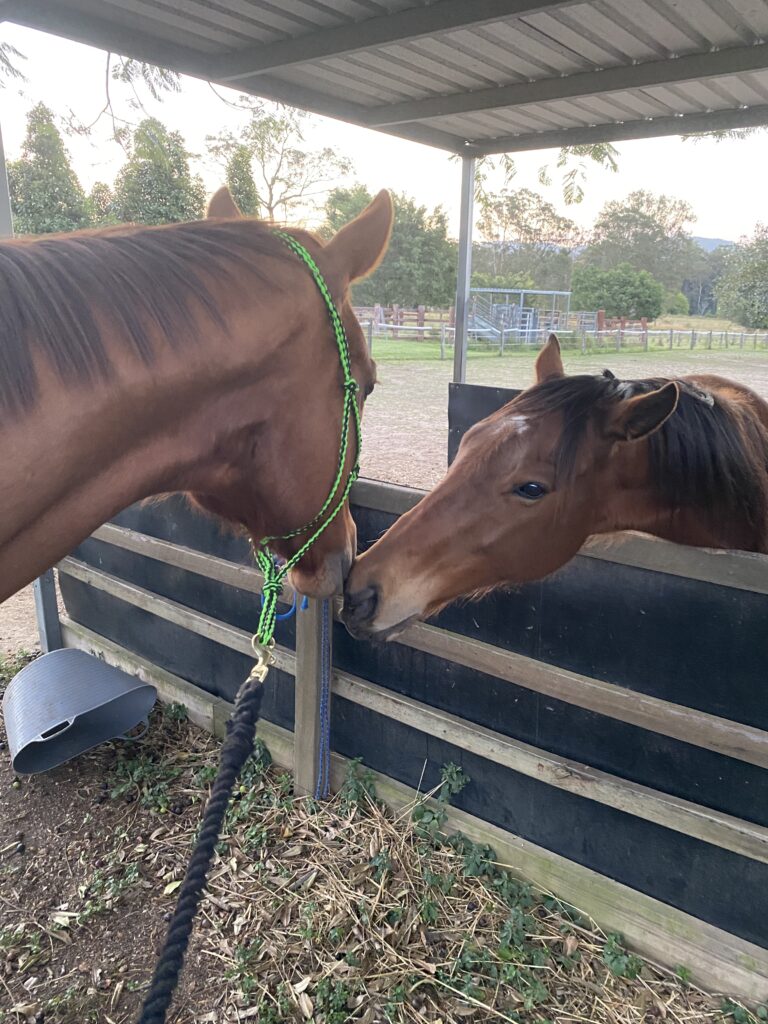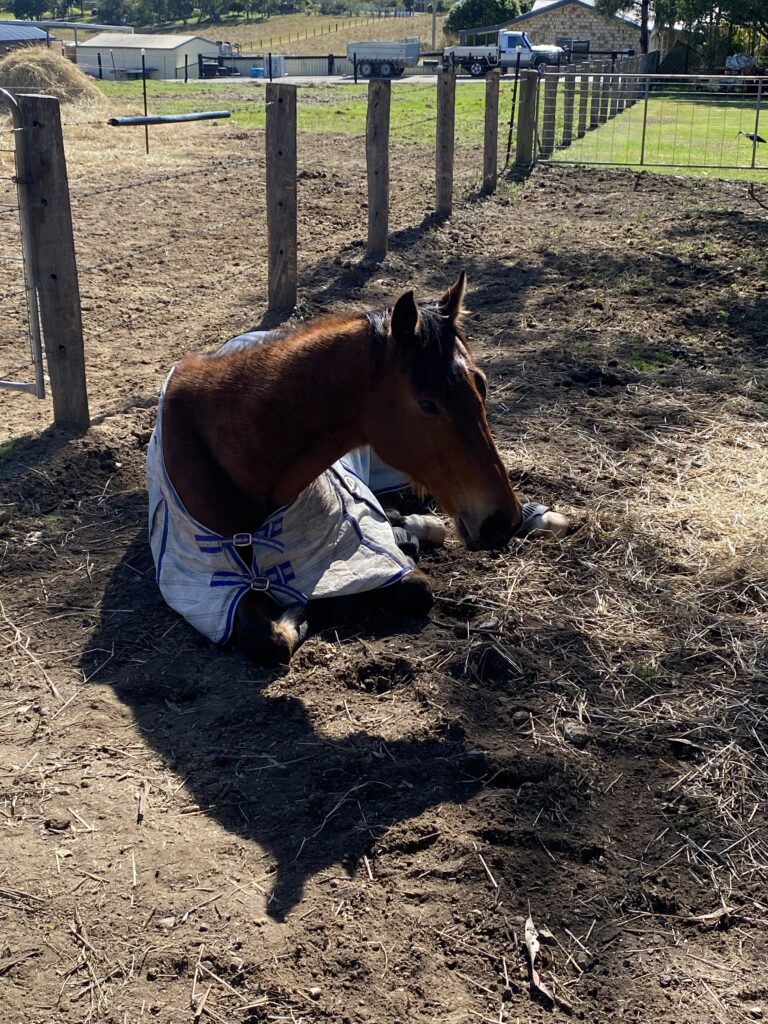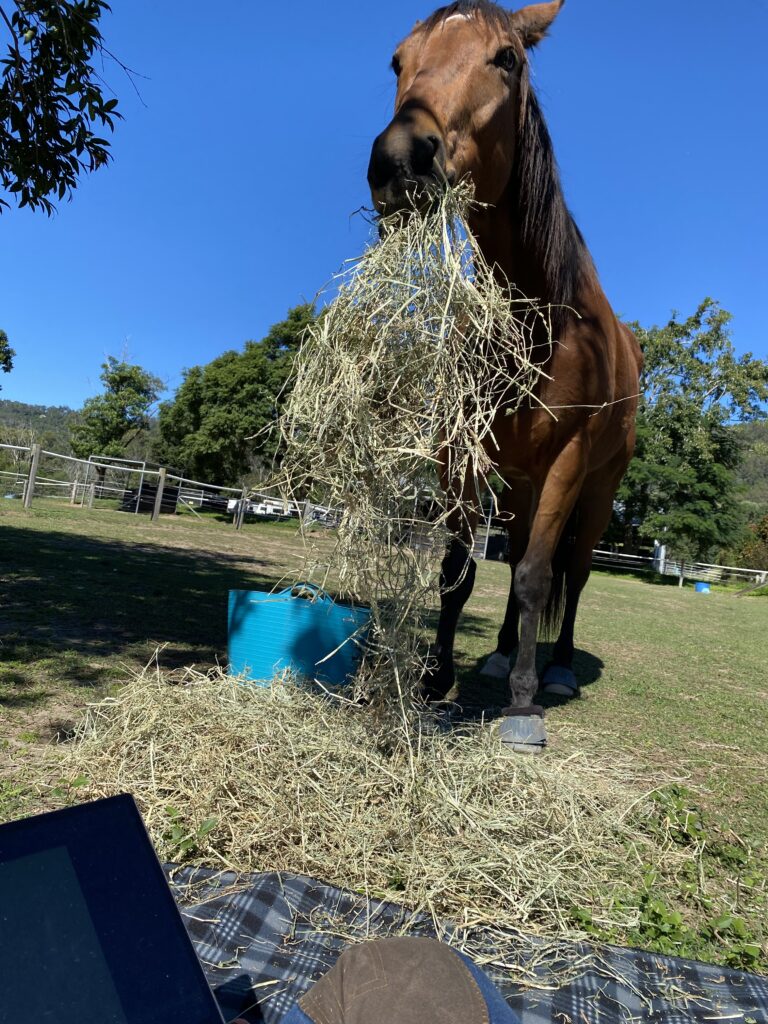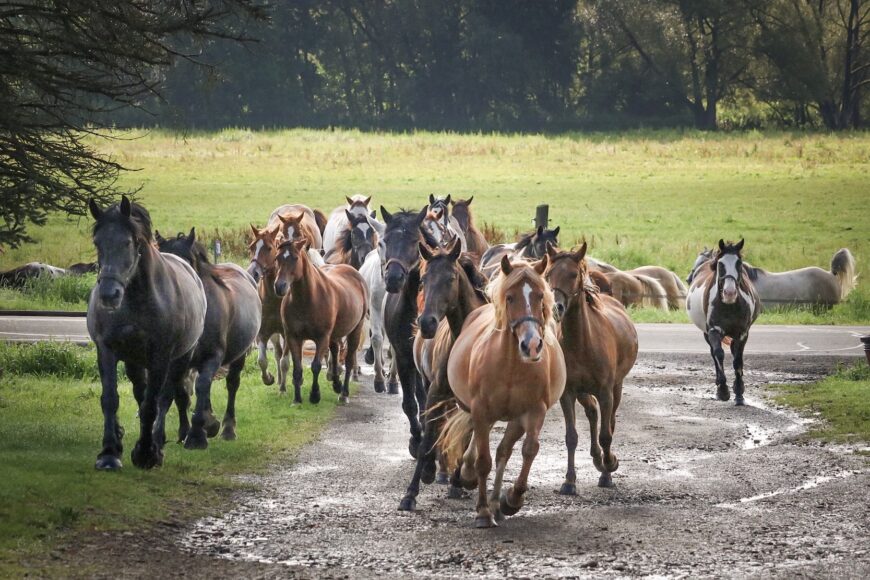Anthropomorphism: the attribution of human characteristics or behaviours to an animal or object.
When a horse reacts around us whether a bite, kick or buck we are likely to assume what we think happened rather than observing and reporting the specific facts. The human interpretation can be quite different to what is their natural instinctual behaviour. Therefore, understanding the natural horse herd behaviour will help you and your relationship with your horses/s.
It is simple (and us humans overthink it every time), horses categorise experiences in either of the below ways:
- Something not to fear – so ignore or explore it.
- Something to fear – so flee it.
When observing a horse, it is important that you remember they observe, react, and think later. It is important to remember even though our horses are domestic (please be aware I am not referring to horses as being pets) their wild horse instincts, form the basis of their behaviour. Our furry friends have a unique body language, as a highly social animal.

The horse communicates its emotions and intentions to the herd through a number communication tools. As the human in our domestic horses’ life, we need to be aware of these signals. These were covered in an earlier blog, click here to revisit these tools.
In addition, our domestic horses require us, as the human in their life to make note of their natural herd needs and wants. These do not differ between wild or domestic horses, if anything they are more heightened for domestic horses:
- Avoiding being injured or eaten by a predator.
- Eating and drinking for survival.
- Procreation.
- Socialisation and routines.
Herd security is huge for horses. When “domesticated” it means horses can be stabled or put in yards by themselves. Which can affect several herd behaviours. Below I have listed a few of the common behaviours but I suggest you take the time to really observe your horse/s behaviour and see what else they are trying to tell you:

- Sleeping patterns: There are three stages of physiological sleep, 1. Light sleep, 2. Slow wave sleep – a deep sleep while standing (this is 65% of their rest time) and 3. Rapid Eye Movement (REM) about 30 mins a night is required (15% of total sleep). If horses do not lie down for REM, they can then have recumbent sleep deprivation. This can happen because of several reasons but some could be they do not feel safe, or the stall dimensions are too small

2. Mutual Grooming: Mutual grooming can happen with pair bonds and is a beneficial touch for the horse’s wellbeing. There are three purposes for mutual grooming:
– Get those hard-to-reach areas.
– Reinforces bonds through odours.
– Calming for the horse/s.

3. Eating behaviour: Unlike humans, the horse is a grazing animal. The physical requirements of a horse for recommended good gut health is a suggested minimum grazing time of 16-17hours per day. Whilst we humans sit down to the basic three meals with snacks in between, the horse must throughout the waking hours eat regularly. Remembering that being a flight instinct animal, this means minimal hours are spent in “sleep” mode, so grazing takes a large portion of a horse’s daily activities.
Fun Fact: Horses who graze for 16-17 hours walk at least 30kms per day while grazing.
- Vices, Stereotypies and Learned Behaviours:
It is important to remember that housing a horse/s in a stall or small yards they are restricted and unable to fulfil their natural herd behaviours of grazing, walking, or playing. Not being able to fulfil these natural behaviours can cause stress, fear, excess energy, boredom to nervousness. Vices are then created to provide an alternate stimulation to fulfil that behaviour. These could be:
- Cribbing – this is when the horse puts their mouth over an object ie. wooden pole and sucks in air.
- Weaving – when the horses weaves from side to side when in the stall or small yards.
- Stall Kicking – kicking or pawing at the stall walls.
- Stall or yard walking – where the horse walks along a familiar path nonstop.
- Eating bedding or dirt – Eats bedding or dirt in their yard or stall.
- Self-mutilation – due to anxiety causes itself pain or mutilation on its body.
Again, this supports the importance of understanding your horse/s natural herd behaviours and how to address these natural instincts through prevention to make sure your horse comfort zones are fulfilled, and you have a happy horse.
As I wrap up this topic, I cannot stress enough to you the importance of understanding your horses’ natural needs for two reasons, firstly you can provide him/her with a natural herd environment. This will make them feel at home and happy and more comfortable with their living environment. Secondly, if you have a knowledge of what they require in their natural herd environment you can understand what they are communicating to you about their needs. This provides a perfect template for a happy horse and human relationship.

